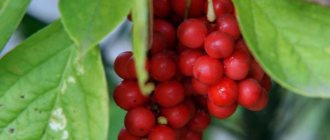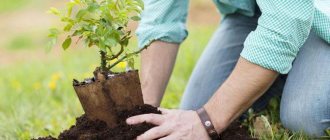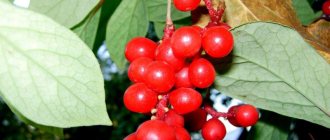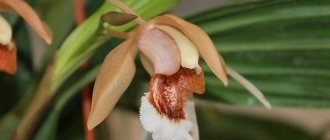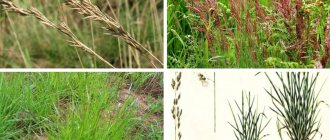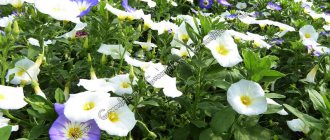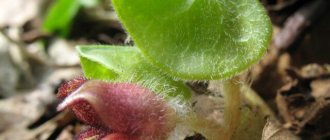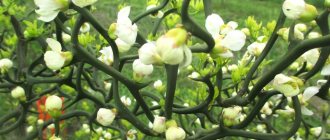What is jujube and where is it grown?
Real jujube (Ziziphus jujuba) has a lot of other names - unabi, Chinese date, jujube, jujuba (not to be confused with jojoba), juju, hinap. When translating botanical literature from English, some will be surprised to find that the plant is often called marmalade.
Unabi is one of 53 species belonging to the genus Ziziphus from the Zhosteraceae or Buckthorn family (Rhamnaceae). The plant has been in cultivation for more than 4 thousand years, so its exact origin is unknown. Most botanists agree that the primary source of distribution of jujube was between Lebanon, northern India, and southern and central China.
Having been introduced to regions with hot, dry summers and fairly cool winters, the species became naturalized. Nowadays, unabi is considered invasive and grows wild in western Madagascar, eastern Bulgaria, some Caribbean islands, India, China, Afghanistan, Iran, and Central Asia. Jujube can be found in the Himalayas, Japan and the Caucasus. There the plant prefers to be located on dry mountain slopes.
Jujube is a large deciduous shrub or small tree with a height of 5 to 12 m. The shape of the crown depends on the life form. In unabi trees it is openwork, hemispherical, shrubs begin to branch from the base, and can be wide-spreading or pyramidal.
Jujube is interesting because it is considered a branch-falling species. The skeletal shoots are permanent, covered with thick dark bark, initially smooth, but with age covered with deep cracks. The annual branches on which jujube blooms are burgundy and fall off at the end of the season. In spring, new fruiting shoots grow. In species plants, annual branches are usually thorny; unabi varieties, as a rule, are deprived of this “excess”.
Jujube leaves are difficult to confuse with those belonging to another culture because of two clear longitudinal stripes located on the sides of the central vein, and very similar to it. Their length reaches 3-7 cm, width - 1-3 cm, shape is ovoid-lanceolate, with a tapering blunt tip and slightly jagged edges. Jujube leaves have a dense, leathery texture, a shiny surface, and a rich green color. They are arranged alternately on short petioles.
The growing season of isiphus begins late, this is what made it possible to develop frost-resistant varieties - the plant simply does not fall under return frosts. And since the fruit-bearing shoots of unabi fall off every year in the fall, and new ones appear in the spring, some inexperienced gardeners believe that they freeze over and do not survive the winter. After all, twig-bearing plants are a curiosity not only in Russia.
How unabi blooms
For jujube to bloom, new branches must appear and grow. So there is no need to worry about the safety of the harvest - return frosts cannot prevent it. In addition, unabi fruit buds are formed in the spring of the current year, and not in the fall of the previous one.
In southern countries, jujube flowering begins in April-May; for Russia, the timing shifts to summer. In most regions, buds should open by June.
Flowering of jujube can last up to three months. Small bisexual five-petaled stars with a diameter of up to 5 mm grow singly or are collected in groups of 3-5 at the base of the leaves. They are greenish-yellow in color and have a pleasant aroma. The flowering unabi bush looks spectacular - up to 300 buds can open on each one at the same time.
Quite often you can come across the statement that jujube cannot pollinate itself; you need to plant several varieties. This is wrong. This opinion was formed because unabi often blooms, but does not set fruit.
The fact is that unabi pollen becomes heavy in rainy or simply humid weather and cannot be carried by the wind. And bees avoid jujube flowers because a fairly high temperature is needed to produce aroma and release nectar.
Unabi fruits usually ripen by October. They are fleshy drupes with two seeds and sweet pulp, which when unripe tastes like an apple, and when fully ripe, becomes mealy, like a date.
The species jujube plant has small fruits, up to 2 cm long, weighing up to 25 g, while varietal ones are much larger - 5 cm and 50 g, respectively. The shape of the fruit is round, oval, pear-shaped. The color gradually changes from pale yellow to red-brown. Unabi varieties have color variations and the fruit may be speckled. The skin is shiny, without a waxy coating.
Comment! All parts of jujube have recognized medicinal properties - fruits, seeds, leaves, bark.
Unabi begins to bear fruit very early. Most grafted varieties bloom the following year.
Jujube lives for about 100 years, half of which bears full fruit. In about 25-30 more, you can remove half or more of the possible harvest from a tree, which is not so little.
Diseases and pests, combating them
The main enemy of the culture is considered to be the unabia fly. Also, sometimes the plant is attacked by spider mites and aphids. To avoid problems, it is necessary to use special insecticidal preparations. But they should be diluted in plenty of water so as not to burn the young shoots.
It is very important to collect all fallen fruits in the fall. It is in them that diseases arise and pests overwinter, which will begin their attack next year.
The unabi date is a popular plant that provides many health benefits. To achieve success in its cultivation, you should strictly adhere to agrotechnical recommendations.
Frost-resistant varieties of jujube
When it comes to frost resistance of jujube, you need to understand that this is a relative concept. The varieties will winter satisfactorily in the Crimea and the Caucasus, although they sometimes freeze there, but they quickly recover. By the way, compared to the Caribbean islands, this is significant progress.
So in the Moscow region or near Kiev, before planting unabi, you should think carefully. And choose varieties that grow in bushes so that they can be covered.
Jujube is considered a zone 6 plant, but behaves differently in different regions. For example, in Azerbaijan, unabi can withstand a short-term drop in temperature to -25° C without damage; in the steppe Crimea it freezes at -28° C, but recovers and bears fruit in the same year. Annual jujubes suffer the most - already in the second season after planting they become much more resistant.
There is no need to rush to throw away even a plant that is frozen to the root collar - it can easily recover. Of course, this has nothing to do with grafted varieties - the small-fruited species of jujube will “break off” from the root.
In any case, the unabi will freeze slightly. In the spring it is pruned, it quickly recovers and produces a harvest the same year.
Important! Small-fruited varieties of jujube have much greater frost resistance; some of them can be planted in the Moscow region, where they freeze slightly but bear fruit.
Unabi varieties, described below, can be grown in the Krasnodar Territory, Rostov, Voronezh regions and on the Black Sea coast without shelter.
Koktebel
The jujube variety Koktebel was created by the Nikitsky Botanical Garden and accepted by the State Register in 2014. The authors are Sinko L. T. and Litvinova T. V. A protective patent No. 9974 dated January 23, 2019 was issued for the variety, which expires on December 31, 2049.
This is a late ripening jujube with universal use. Forms a medium-sized tree with a rounded crown and dark gray bark. Compactly located branches extend from the trunk almost at right angles. The dark green leaves of jujube are large, smooth and shiny, ovoid in shape.
The large, round fruits of the Koktebel unabi variety have an average weight of about 32.5 g. The lumpy peel is shiny, covered with dots, and becomes light brown after full ripening. The sweet and sour pulp is creamy and mealy. Jujube Koktebel bears fruit annually, yielding up to 187 quintals per hundredweight.
The variety tolerates high temperatures well. Transportability, resistance to drought and frost of jujube are average.
Plodivsky
The jujube variety Plodivsky was created at the Novokakhovskoe Experimental Farm (Ukraine), accepted by the State Register in 2014. Recommended for cultivation in the North Caucasus region.
Jujube Plodivsky forms a tree of medium height with a small number of thorns. Young skeletal branches are long, grayish-brown, fruit shoots are creamy-green, they are easy to distinguish.
The fruits are small, oval-shaped, with a brown peel, greenish-white pulp, and a small amount of juice. The yield of the variety per 1 ha is 95 centners, the ripening period is average.
Resistance to drought and low temperatures of Plodivsky unabi is high.
Sinit
The jujube variety Sinit, accepted by the State Register in 2014, was created by the Nikitsky Botanical Garden. It was issued a protective patent No. 9972 dated January 23, 2019, which will expire on December 31, 2049.
The fresh fruits of this jujube variety received a tasting score of 5 points and are intended for dessert. A medium-sized tree with dark gray bark and a rounded crown forms skeletal branches set at right angles to the trunk. The leaves of unabi are oval, small, dark green.
The fruits are rounded and elongated, with a thin dark brown skin. The flesh, devoid of aroma, is dense and juicy, creamy, sweet and sour. Productivity – 165 c/ha.
The variety can withstand frosts down to -12.4° C without damage. Unabi Sinit tolerates heat well and tolerates drought moderately.
Tsukerkovy
The jujube variety, the name of which is translated from Ukrainian as “candy”, was accepted by the State Register in 2014. Created by employees of the Nikitsky Botanical Garden Sinko L. T., Chemarin N. G., Litvinova T. V. Protective patent No. 9973 was issued and expires at the same time as in the jujube varieties Koktebel and Sinit.
Unabi Tsukerkovy has an early ripening period and a dessert taste, rated 5 points. Forms a medium-sized tree with branches growing at right angles. The dark green, ovate-elongated leaves are small.
Oblong-round fruits of medium size, with a shiny dark brown skin and sweet and sour juicy pulp, without aroma. The yield of the variety is up to 165 centners per hectare.
Yalita
A new variety of unabi, the patent for which was issued earlier (No. 9909 dated November 12, 2018) than it was accepted by the State Register in 2021. The authors were Sinko L. T. and Chemarin N. G.
The jujube variety Yalita is very early, universally used, the taste is rated 4.9 points. The tree is of medium height and forms a dense, ascending crown with reddish-brown branches pointing upward at an acute angle to the trunk. The ovate leaves are large, with a sharp tip and a round base.
The fruits are large, in the shape of an elongated cylinder, with a brown smooth skin. The pulp is dense, sweet and sour, yellowish. Productivity – up to 107.6 c per hectare.
Cultivated species
Several types of jujube are grown to produce fruits.
All described types of unabi are very often called jujube, which creates some confusion.
Only one species is suitable for cultivation in Russia - the common jujube. The rest, due to low winter hardiness, are cultivated only in southern countries.
Jida and jojoba
The unabi tree is very often confused with jida and jojoba. To better understand what jujube is, let’s look at their differences in more detail.
| Jida | Hojoba | Jujube | |
| Leaves | Alternately spaced, narrow, silvery | Oval-shaped, silver-green, do not fall off in winter | Rich green, glossy, ovoid in shape with a pointed crown |
| Flowers | Yellow, bell-shaped | Yellow, dioecious | Yellow, wide opening |
| Fruit | Edible, brown-red, oval-shaped | Dry boxes, with cupped base | Edible, sweet, oval shaped. Red-brown color. |
Varieties
When growing unabi, varieties are selected taking into account the climatic characteristics of a particular region. For example, early ripening ones are better suited for the middle zone; for more southern regions, mid-ripening and late ripening ones can be used. When choosing jujube, varieties should also be classified by large-fruited size.
Descriptions of the most common varieties:
How to grow unabi
In order for jujube to feel comfortable, it needs hot, dry weather in summer and cold, but without significant frost in winter, ideally around 5° C. Zone 6 suits it best.
Jujube grows wild in the mountains on poor soils with any acidity, even highly alkaline ones. But, obviously, it prefers soils rich in organic matter. In a warm climate on the chernozems of the Lower Don, by the age of 5, varietal jujube plants reach 2.6 m, in 7 - 4 m. And in Tajikistan, where it is much warmer, by the age of 10 the same cultivar rarely exceeds 2 m.
What jujube definitely needs is a sunny position - it grows poorly in partial shade, and even if the buds open, they will all turn out to be barren flowers. Unabi tolerates heat perfectly - even at a temperature of 40° C without watering, the leaves do not wither, and the fruits develop normally.
Jujube branches can break from strong winds, so you need to place the trees in a protected place.
Where to place it?
For full development, jujube needs a lot of light. The tree practically does not grow in the shade, and one cannot count on a harvest. Even if unabi blooms in low light conditions, fruits will not set. Therefore, you should choose the sunniest area to plant a tree. At the same time, it must be reliably protected from cold winds and drafts.
Southern and southwestern slopes are optimally suited for growing jujube. It is better to plant it closer to their top or at the base. A good solution would be to place the Chinese date on flat areas near buildings that will shelter it from cold air currents. But the lowlands are completely unsuitable for planting it.
Soil quality is the most important condition for uniform growth and fruiting of unabi. The culture prefers moderately moist loamy soils, fertile, but without an excess of nutrients. In poor and dry land, jujube will bring a meager harvest. If you overdo it with fertilizers, the tree will be completely covered with green leaves, and few fruits will be produced on it.
Is it possible to grow jujube from a seed?
Seeds obtained in your own garden from a single jujube tree or bush most likely will not germinate - cross-pollination is necessary. But such plants bear fruit without problems.
So, before you start germination, you need to make sure that the unabi seeds are germinated, because you will have to tinker with them. Most likely, not species or varietal plants will grow from the seeds, but “semi-cultivated” ones.
Comment! This does not make jujube fruits less tasty, and they set early - 3-4 years after seed germination.
Growing unabi from seed is actually not too difficult. All the failures that await gardeners along this path are related to the quality of planting material. Jujube seeds will not germinate:
- If taken from single growing specimens. This does not affect the fruiting of unabi in any way, but to ensure the possibility of propagation by seeds, cross-pollination is necessary.
- Even if several varieties of jujube grow nearby, it is not a fact that the seed will germinate. Some gardeners, who deliberately damage the hard shell to facilitate the emergence of seedlings, complain that it is rarely possible to do this normally with unabi. Often the seed breaks and becomes unsuitable for germination. And they (gardeners) notice that the inside is often... empty.
- Seeds taken from unripe fruits will not germinate.
- After the unabi is eaten, there may be unhardened, soft seeds inside, which is not so rare. They are not suitable as planting material.
- If the seeds become moldy (which happens often) during preparation for sowing, they can be discarded.
What else can be said about unabi seeds? Gardeners who grow jujube can tell from one species which plant they came from:
- large-fruited varieties have more unabi and seeds than species, and in proportion to the size of the fruit;
- Although dessert jujubes have small seeds, they are thin, long, and beautifully regular in shape.
There are different ways to grow and propagate the Chinese date or unabi from the pit. Beginner (and not so beginner) gardeners will be presented with a time-tested and probably the simplest one. In addition, this is how you can get a strong, truly healthy jujube plant with a powerful root - frankly speaking, the culture does not like transplants, even at a young age.
Preparing containers and soil
No matter how much residents of the Moscow region want to grow jujube, it remains a southern crop. And there in winter the soil does not freeze very much, and it is better to sow unabi directly into the ground, in a permanent place.
In the first year, jujube forms a long taproot, and the pot, firstly, limits its growth, and secondly, any transplantation of the underground part causes injury.
How to plant unabi from a seed
There is no point in planting dry jujube seeds, especially in a permanent place - most of them will not germinate. You need to be prepared for this. They are first germinated.
Comment! In nature, unabi reproduces well by self-sowing, becoming a weed in some arid regions, but the seeds still have low germination.
From the moment of harvesting, jujube seeds are stored in a dry place. They need to be prepared for sowing about a month in advance:
- First, the unabi seeds are thoroughly washed to remove any remaining pulp and soaked in water at a temperature of 30° C for 60 minutes.
- Wrap jujube seeds with a damp piece of burlap, wrap them in a plastic bag and store at a temperature of 20-25 ° C.
- Be sure to remove the film daily and unroll the fabric. If necessary, the burlap is moistened, and the unabi pit is rinsed - it is difficult to completely remove the remaining pulp, it may begin to mold.
- As soon as the root begins to hatch, jujube can be planted in the ground. This happens in about a month.
Experienced gardeners may be indignant and note that if unabi seeds are intentionally damaged, germination occurs much earlier. Yes, this is true. But it is with jujube seeds that this operation requires a certain skill. And the method described here, as promised, is the simplest.
Landing dates
The ideal time to plant hatched jujube seeds in the ground in a permanent place is when the soil warms up to 10° C. To name the time, even approximately, will cause a flurry of discontent from gardeners who have ruined the seedlings. It depends on the region, weather and many other factors.
Advice! When the corn sprouts vigorously, it’s time to move the hatched jujube seeds into open ground.
How to grow unabi from a seed
Holes are dug onto the bayonet of a shovel. Jujube seeds are buried 5 cm. If there are a lot of seeds, you can place 2-3 pieces in each hole for safety. When planting single plants, the distance between the holes should be at least 2-3 m, if you want to grow a hedge of jujube - from 50 to 100 cm. In this case, it all depends on how quickly you want to get the finished “wall”.
First, before the unabi sprout appears above the soil surface, you should mark the planting site so as not to trample it. Then jujube needs regular watering, weeding and loosening. When the seedling grows a little, the soil under it will need to be mulched, preferably with grass cut from the lawn.
Jujube will become a drought-resistant, non-capricious plant by the end of the season or next spring. In the meantime, it needs care.
Beneficial features
The fruits contain organic acids, sugar, proteins, fatty oil, catechin, tannin, nicotinic and folic acids, pectin, and tocopherol. Using them, you can remove copper, lead, toxins, and mercury from the body. Iron, potassium, magnesium, calcium, phosphorus, vitamins C, P are also contained in unabi.
The Chinese date makes it possible to recover much faster after an illness; in addition, it is often prescribed for diseases of the kidneys, urinary system, stomach, and stomatitis, accompanied by the appearance of ulcers.
Also, unabi should be taken during pregnancy, which will help cope with toxicosis. Young nursing mothers should also include the Chinese date in their diet, as it significantly increases lactation.
With the help of the fruits of the plant, you can normalize blood pressure and cope with headaches and heart pain.
Features of propagation of unabi by cuttings
Jujube can be propagated by green cuttings, this will preserve all varietal characteristics. But there are several subtleties that even experienced gardeners do not always know or think about:
- In plants grown from rooted cuttings, not a taproot, but a fibrous root is formed.
- You need to care for this jujube more carefully. It will not be as resistant to external adverse factors as one grown from seed or grafted.
- Such an unabi will not live and bear fruit for 100 years.
- Jujubes grown from cuttings are less frost-resistant.
Otherwise, nurseries would grow all planting material from cuttings, rather than practicing complex procedures such as grafting or budding.
Rules for propagating jujube by cuttings
Jujube is propagated by green cuttings in the first half of June. Healthy, strong branches from the current year's growth are cut 12-15 cm long. The lower section should be under the bud, at a distance of 5 mm.
Unabi cuttings are soaked in a root formation stimulator for the period specified in the instructions. Remove all leaves except the top two - they are shortened by half.
The school is located in a place that is lit part of the day. Even better - under a tree with an openwork crown.
A loose, not very nutritious substrate is covered with a 5-6 cm layer of sand. Jujube cuttings are planted, watered, and covered with plastic bottles with a cut bottom and an open neck.
Comment! Cuttings can be planted in separate containers filled with light substrate, but caring for them will be more difficult.
The unabi planting must be kept constantly moist. When new shoots appear, the bottles are first removed for a few hours during the day, then removed completely.
Jujube seedlings are moved to a permanent location next spring.
Rules for feeding dates
In order for the seedlings to feed normally, you need to fertilize the soil. The effect of fertilizers extends for a three-year period from the date of planting.
When the tree reaches five years of age, it will need to be fertilized every spring. During this period, 18 grams of nitrogen are used. Potassium and phosphorus are used for autumn feeding. The first substance is used in the amount of 10 grams, the second - 12.
As winter approaches, it is necessary to scatter humus around the tree trunk once every two years. When jujube reaches six years of age, fertilizers are used in double quantities. During the season, the crown is treated with useful solutions to increase sugar levels and improve taste.
How to plant unabi in open ground correctly
The most crucial moment in growing and caring for unabi is planting. If done correctly, in a place suitable for the culture, there should be no problems.
When to plant: spring or autumn
Jujube is a southern crop, therefore, it should be planted only in the fall. The exception is container plants, which can be placed on the site in early spring. But not in summer! Zone 6 is not the Middle Zone! Even jujube moved into open ground from a container will suffer from the heat for the first season, despite its resistance to high temperatures.
Read to the end what those who advise spring planting write! “So that the plant has time to take root before the onset of severe frosts.” Sorry. What kind of “severe frosts” can there be in the sixth zone?!
And in the fifth, you can plant in September, and at the end of November cover the unabi for the winter. And “severe frosts” there usually begin no earlier than December. If during this time the jujube does not have time to take root enough to overwinter, it is unlikely that it will take root at all and will bear fruit normally.
Site selection and soil preparation
Choose a place for planting jujube that is as sunny as possible and protected from the wind. Any soil will do, as long as it is loose and well-drained. Dense soils are adjusted to meet the requirements of jujube by adding peat or sand. When soaking, be sure to provide drainage with a layer of at least 20 cm.
The pit for jujube is prepared in advance, preferably in the spring, but no later than 2 weeks before planting. Its size depends on the age of the unabi, and should be 1.5-2 times the volume of the root. After the hole is dug and drainage is laid, it is filled 70% with substrate and filled with water.
How to plant unabi correctly
To plant jujube, choose a cloudy, cool day. It is produced in the following sequence:
- A depression is made in the center of the planting hole, the volume corresponding to the jujube root.
- If the unabi is taller than 60-70 cm, drive in a strong peg for a garter.
- Place the jujube in the hole, cover the root, constantly squeezing the ground. This will prevent the formation of voids that prevent rooting.
- Water the unabi abundantly and mulch the tree trunk circle.
Two points in planting jujube should be considered separately:
- Usually, when planting crops, the position of the root collar is clearly specified. The distance by which it should rise above the surface of the earth or, conversely, be buried is indicated. For jujube this is not critical. Even for plants grafted in the root collar area. Some gardening practitioners generally advise deepening the grafting site by about 15 cm, especially in cool areas. So, when jujube freezes in the spring, not just shoots of the specific rootstock will grow from the root. From the lower part of the varietal scion, a shoot of cultivated unabi will emerge.
- Planting jujube with bare root. Some inexperienced gardeners may be dissatisfied with the description of the process. Where is the mound around which the unabi roots spread out when planting? What would it be like without him? Jujube has a well-developed tap root, under which you need to dig an additional hole. Instead of thinking about how it can be straightened around the “mound”. If a gardener was sold jujube with a fibrous root, then he was deceived - the plant was not grafted, but grown from a cutting. It does not have the resistance to adverse factors and the durability of seed grown or grafted unabi. It’s one thing for a gardener to propagate jujube himself; another thing is to buy it from a nursery or garden center. Such plants should not go on sale!
Planting dates and scheme
Being a southerner by nature, jujube is very dependent on heat. In the middle zone, its planting is usually carried out in the spring. Plants placed in the ground in the fall often do not have time to take root before the onset of cold weather and freeze slightly. If the winter turns out to be harsh, they may not survive it at all. Spring planting is carried out starting in March, autumn planting - in October-November. Here you need to focus on the climate characteristics of the area.
The pit for unabi seedlings is prepared in advance. Its depth and diameter are 1 m. The soil is enriched with mineral compounds and manure. By placing a seedling in the hole and covering it with soil, the soil is compacted. Young trees should not be deeply buried; 10 cm is enough. After watering the hole abundantly, the soil around the planted jujube is mulched with any organic matter. This way the plant will take root faster.
Caring for jujube after planting in open ground
Everything is very simple here. Jujube requires some care the first season after planting, then the owner’s task is usually to harvest the crop in a timely manner.
Watering and fertilizing schedule
Unabi adapts well to soil moisture. In irrigated areas and where it often rains, the jujube root grows 80 cm. In arid regions, in the absence of irrigation, it penetrates 2-2.5 m into the ground.
They specially moisten the soil immediately after planting jujube, and, as a safety net, the next season. If it is a dry autumn, moisture recharge is carried out in the fifth zone - this way the unabi will overwinter better. All.
It is especially important to limit humidity during the formation and ripening of jujube fruits. It has been noticed that in rainy summers the ovaries fall off and the harvest is poor.
Jujube is usually not fed. You can stimulate the plant a little with nitrogen fertilizer in the first spring.
On poor soils, in late autumn or spring, mulch the soil under jujube with humus. But on organic-rich soils and chernozems, the application of fertilizers can cause increased growth of shoots, leaves, and even abundant flowering. The unabi harvest will certainly suffer.
Loosening, mulching
The soil under jujube must be loosened only in the first year after planting. Then the need for this disappears.
Newly planted and unabi obtained from cuttings should be mulched. For jujubes grown from seeds and grafted, well-rooted, this procedure is unnecessary - it retains moisture under the bush that is unnecessary for the crop.
How to prune jujube correctly
In the first year after planting, jujube grows slowly - all efforts are spent on restoring and growing the root system. Formation begins for the third season. Unabi, planted in the fall, will have completed a full vegetation cycle on the site by this time and will overwinter twice.
If jujube grows like a bush, thin out the branches to lighten the crown. When the crop enters full fruiting, and this will happen quickly, the skeletal shoots are shortened to enhance lateral branching. It is on the growth of the current year that the harvest is formed. For convenience, you can limit the height of jujube by pruning.
Here it is important not to be greedy, and to limit the number of skeletal branches - the bush should be well lit. If you leave a lot of shoots on the unabi, the harvest will be smaller, since the fruits will ripen only on the periphery, the sun simply will not penetrate into the bush, and the ovaries will fall off.
The jujube tree is usually formed on a low trunk, with 4-5 skeletal branches arranged in a cup shape. To do this, the main conductor is cut at a height of 15-20 cm. When the side shoots begin to grow, the strongest ones are left. Next year they are also shortened, leaving about 20 cm.
It is the open cup-shaped crown of jujube that will help grow a high-quality crop in the fifth frost resistance zone, which is not very suitable for the crop. In the future, you will have to maintain the shape annually, as well as carry out sanitary pruning. At the same time, all broken, dry, and shoots that thicken the crown are cut off from the unabi.
Preparing jujube for winter
In the first year after planting, unabi are earthed up in late autumn, and the crown is wrapped in white agrofibre and secured with twine. Jujube will survive subsequent winters in zone 6 without any shelter.
In the fifth zone, things are worse - the unabi will definitely freeze there, the question is to what extent. Slightly damaged branches can be pruned in the spring, often this does not even affect fruiting. It happens that jujube freezes to the ground level and then breaks away from the root.
It is possible to cover it completely only while the plant is small in size. To do this, the tree trunk circle is covered with a thick layer of humus, and the jujube crown is tied with white non-woven material.
But unabi grows very quickly, and soon wrapping the crown will become problematic. So you will have to put up with constant freezing of the shoots, or give up growing jujube altogether.
Chinese date - what kind of plant is it?
This plant comes from China. It is also called red date, jujube or unabi. It is a large bush or tree, reaching a height of 8 m. The culture is characterized by a spreading crown and leaves that fall off in the winter.
Chinese date is a valuable plant that brings benefits
Wild plant species have large spines. Moreover, most cultivated plants are devoid of thorns. They have large fruits, reaching 30-40 g. This plant is characterized by many useful properties.
The fruits, foliage, and seeds of the plant have long been used in Chinese medicine. The culture has medicinal properties. It is used in the following situations:
- high pressure;
- pathologies of the digestive system;
- stress;
- pathologies of the respiratory system;
- low hemoglobin;
- heart diseases.
Important! The fruits of the plant can be consumed to strengthen the immune system - they are eaten raw or used for preparations.
The foliage of the Chinese date palm is used to prepare medicinal decoctions or infusions. It contains a special substance - zizifine. It helps dull taste buds. Therefore, the substance is very often used to make bitter medicines.
Harvesting
Many jujube varieties bloom the following spring after planting. Species plants grown from seeds bear their first harvest in the 3rd or 4th season. One adult bush or tree produces approximately 30 kg of fruit, and record holders produce up to 80 kg per year.
Since the flowering of jujube is spread over several months, the harvest ripens unevenly. In the fifth zone, late varieties may not reach full ripeness before the onset of frost.
Unripe unabi, which has an apple taste, is consumed fresh and processed. Collect by hand when the surface of the skin becomes brown by a third.
Fully ripened jujube becomes soft, mealy inside, like a date, and very sweet. It can wither directly on the branches and hang on the tree until frost - this is how the fruits gain sweetness. In hot, dry summers, unabi ripens faster.
Harvesting ripe jujube can be done at one time. To do this, use special combs with teeth spaced every 1 cm. The fruits are “combed” onto the film, and then manually freed from leaves and twigs.
If prolonged rains begin in the fall, the jujube must be harvested completely, regardless of the degree of ripeness, so as not to lose the harvest. The fruits will arrive indoors, laid out in one layer.
Unripe jujube is not dried, and the seeds collected from it have poor germination.
